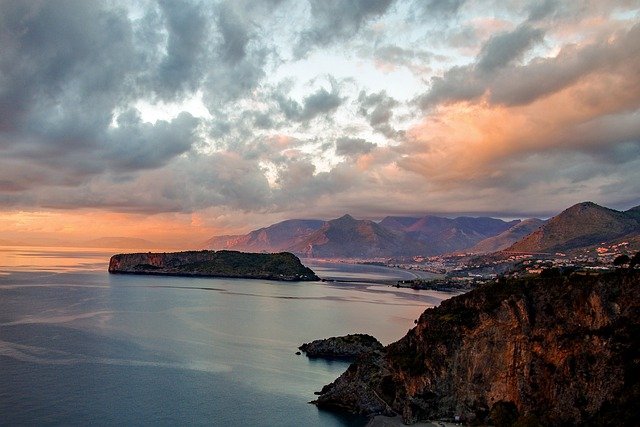The village of Praia a Mare arose in ancient times as a hamlet inhabited by fishermen and farmers, who settled along the stretch between the coastline and the course of the river Noce, on the border with Basilicata. Today, it is a town best known for the beauty of its beaches, which are one of the most sought-after attractions by travellers. The coastline is partly sandy (at the northern end), but becomes rocky as you move south. At the southern end of the city, there is a high spur of rock that goes by the name of Dino Island. Its name has ancient origins, in fact, according to some, it derives from the Greek word 'dina', meaning storm, indicating the danger of the waters around the islet; others, instead, link the name to an ancient temple called Aedina, dedicated to Venus. The island's peculiarity is the presence of sea caves, which can only be reached by small boats.
Finally, Praia a Mare is also the village located at the gates of the Pollino National Park, one of Italy's largest nature reserves, located inland (between Calabria and Basilicata) and characterised by unspoilt landscapes, picturesque villages and heights with breathtaking views to be reached by trekking and hiking trails.
Praia a Mare is best known for the beauty of its beaches, but the village is home to many other attractions that have been discovered and visited. Strolling through the historic centre and wandering its narrow streets is a pleasant and relaxing experience that will project you into the typical atmosphere of small Mediterranean towns. In Fiuzzi, on the other hand, there is the tower of the same name, a construction dating back to the 15th-16th centuries, erected for defence against Turkish incursions, which can still be admired today. Not far from the centre, then, there is the suggestive Sanctuary of the Madonna della Grotta located inside a cave overlooking the sea, towards the Island of Dino, a small island that is certainly worth a visit, and which is a perfect destination for diving and crystal-clear sea lovers, who can discover and explore numerous caves and inlets: among these, the most famous and suggestive is the Grotta Azzurra. In addition, hiking enthusiasts can take advantage of organised visits to Dino Island to walk along paths and trails immersed in the wild nature of the place. Finally, just 20 minutes by car, you can reach San Nicola Arcella and the famous Arcomagno beach, which owes its name to a large rocky wall as long as the bay and located a few metres from the shore, with a large and scenic arch carved in the centre that acts as an entrance to the sea.
The typical cuisine of Praia a Mare encompasses the gastronomic traditions of two geographical areas: the Riviera dei Cedri and the Parco del Pollino, both characterised by an authentic cuisine linked to the products of the land. First courses include handmade pasta, such as fusilli or lagane, to be dressed with pork or kid sauce, or with chickpeas or 'poverelli' beans, a typical inland legume.
Among the main courses, you can choose between meat dishes such as pork rind, mutton leg and sausages made using traditional methods, and vegetable dishes such as aubergine poncia with peppers and potatoes, which can be eaten as a side dish or as a dish in itself. To finish, there is no shortage of desserts: the typical ones are made with citron, and are recognisable by their enveloping aroma and very special flavour. We find the, among the most characteristic, panicelli, a very particular dessert that takes the form of a bundle of citron leaves inside which are raisins and citron peel, and the crocette made with candied figs arranged in a cross and stuffed with candied citron.
In Praia a Mare, it is possible to participate in a number of different events, which represent an excellent combination of culture, innovation and historical identity. In July, there is the World Festival, an international festival dedicated to ethnic music, which lasts for about a week. Between the end of June and the beginning of September, Praia a Mare Con' is held, a cultural event featuring philosophers, writers and national cultural figures. An event linked to the religious cult is, instead, the feast of the Madonna della Grotta, from 14 to 18 August, a very heartfelt event that culminates in the procession along the city streets and by sea, amidst music, prayer songs and a fireworks display at sea.









